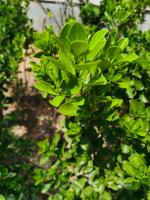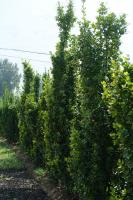Ramet propagation of Ophiopogon japonicus
Ramet propagation is the most important propagation mode of Ophiopogon japonicus
When we propagate Ophiopogon japonicus by means of split propagation, we should first select the Ophiopogon japonicus plants with good growth between April and may. The leaves of healthy Ophiopogon japonicus plants generally show dark green. At the same time, we should observe whether the Ophiopogon japonicus plants have diseases and pests. Ophiopogon japonicus with diseases and pests cannot be used for split propagation
After selecting suitable Ophiopogon japonicus plants, we will shake off the soil at the root of the excavated Ophiopogon japonicus. The root tuber part of Ophiopogon japonicus is very valuable and can be used as medicine. Planting Ophiopogon japonicus in a large area can leave its root tuber as a commodity. After cutting the root tubers, cut off the stem nodes of Ophiopogon japonicus, leaving a length of about 0 or 5 cm to keep the leaves of Ophiopogon japonicus from spreading. If the stem nodes we leave are too long, it is easy to cultivate high foot seedlings, which grow very small tubers
After cutting the stem nodes, we are gently separating the plants of Ophiopogon japonicus, which completes the branching of Ophiopogon japonicus. Then we bundle the divided plants with straw, cut off the leaf tips to prevent excessive water evaporation, and immediately plant them in the soil

Treatment of redundant Ophiopogon japonicus ramets
If there are seedlings that cannot be planted immediately, we first immerse the base of the ramet seedlings in water to fully absorb water, then bury them in loose sand, and water the seedlings once a day or every other day, which can maintain their vitality, but we should plant them in time. This method can only last for five days


 how many times do yo...
how many times do yo... how many planted tre...
how many planted tre... how many pine trees ...
how many pine trees ... how many pecan trees...
how many pecan trees... how many plants comp...
how many plants comp... how many plants can ...
how many plants can ... how many plants and ...
how many plants and ... how many pepper plan...
how many pepper plan...

































